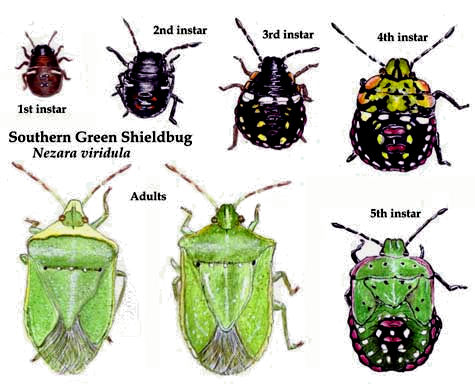Natural solutions for dealing with green shield stink bug
While there are a number of documented predators of this insect the only ones I have actually seen in action are poultry and spiders.
A year or two back I introduced a juvenile bug to a small jumping spider who quickly pounced and commenced feeding. More recently some visiting students noticed a decent sized wolf spider (Lycosidae) lunching on an adult shield bug.
It's reassuring to witness the local ecosystem operating to maintain balance and equilibrium. As the population or one organism increases so does the opportunities for their predators. Knowing this it is essential that our gardens provide adequate and appropriate habitats for these various helpers. And while our tendency for binary, black and white thinking makes us quick to label species as friends or foe we should take a moment to contemplate that, just like humans, other organisms have multiple roles to play, giving and taking as they participate in the dance of life.
January 2021
So far this summer, which has been punctuated by many brief cool and rainy periods, we have seen very few of the green stink bug. Plenty of other flying insects around, including as small wasp I noticed exploring calendula seed clusters, a popular location for freshly hatched shield bugs.
